#architectural BIM modeling in USA
Explore tagged Tumblr posts
Text
We offer comprehensive Architectural BIM Modeling services designed to streamline your projects from conception to completion for project efficiency.
In today’s fast-evolving construction industry, the demand for precision, efficiency, and innovation has reached new heights. The use of Building Information Modeling (BIM) has become integral in architectural design and construction processes, and Revit services are at the forefront of this transformation. At Plinnth BIM, we offer comprehensive Revit Architectural BIM Modeling services in USA designed to streamline your projects from conception to completion, ensuring accurate, intelligent models that improve collaboration, reduce errors, and enhance overall project efficiency.
Whether you’re looking to design a new building, upgrade an existing structure, or optimize the functionality of your design workflow, our specialized Revit services provide the foundation for successful project execution. By leveraging Architectural BIM Services, we allow architectural firms and construction companies to maximize their productivity while maintaining superior quality standards.
#architectural BIM modeling services#architectural BIM modeling in USA#architectural B#BIMservices#architectural BIM services
0 notes
Text
10 Key Factors to Consider When Choosing BIM Modeling Services for Your Project

Building Information Modeling (BIM) has become a cornerstone in modern construction and design projects. As the need for efficient project management, collaboration, and accuracy grows, selecting the right BIM modeling services is crucial for achieving a successful outcome. This guide will walk you through the key considerations to help you choose the best BIM services for your project, ensuring seamless collaboration, efficiency, and quality results.
1. Understand Your Project Requirements
The first step in selecting the right BIM services is a thorough understanding of your project’s specific requirements. Each project has unique needs, and the complexity of these requirements will determine the type of BIM services that are ideal. Here’s what you need to consider:
Project Size and Scale: Larger, complex projects may require comprehensive BIM services, including 3D, 4D, 5D, and even 6D modeling. These models integrate time, cost, and sustainability considerations.
Industry-Specific Needs: BIM applications vary across industries like architecture, construction, civil engineering, and manufacturing. Ensure that the service provider has experience in your specific sector.
Project Phase: Identify whether you need BIM modeling for early-stage design, construction, or facility management. Different services may specialize in different project phases, so choose accordingly.
2. Check the Provider’s Expertise and Experience
A BIM service provider’s level of experience is a strong indicator of their ability to deliver quality results. Ensure the provider has a strong track record in the specific type of modeling services you require. Some factors to evaluate include:
Portfolio of Past Projects: Ask for case studies or examples of previous projects similar to yours. This will give you an idea of the provider’s expertise in handling similar challenges.
Industry Certifications: Look for providers that hold relevant certifications such as ISO standards in BIM, which demonstrate adherence to high-quality service and international standards.
Technical Expertise: The right provider should be proficient in industry-leading BIM software like Autodesk Revit, Navisworks, ArchiCAD, and Tekla. Providers familiar with a wide range of tools can offer more customized solutions for your needs.
3. Evaluate the Range of BIM Services Offered
BIM is more than just 3D modeling. It involves the integration of multiple dimensions (4D, 5D, 6D) that can add value to your project. Before making a choice, ensure the service provider offers a broad range of BIM services that align with your project goals:
3D BIM Modeling: This is the core of BIM and involves creating three-dimensional representations of your project.
4D BIM (Time): Integrating time allows you to visualize the construction process over time, aiding in project scheduling and timelines.
5D BIM (Cost): This service integrates cost data, helping you manage project budgets and track expenses effectively.
6D BIM (Sustainability): Sustainability models help optimize energy efficiency and meet environmental targets.
BIM Coordination: This service ensures all disciplines—architectural, structural, MEP (Mechanical, Electrical, Plumbing)—are working together without conflicts.
A provider that offers a wide array of services will be better equipped to handle your project’s evolving needs.
4. Assess Collaboration and Communication Capabilities
Effective collaboration is at the heart of BIM, allowing all stakeholders to stay on the same page throughout the project’s lifecycle. Choose a BIM service provider that uses modern collaboration tools to ensure seamless communication. Key aspects include:
Cloud-Based Platforms: BIM 360 and similar platforms allow real-time updates, remote access, and centralization of project data. This improves transparency and facilitates collaboration among dispersed teams.
Coordination Tools: Clash detection and coordination services should be a part of the provider's offerings to avoid conflicts between various disciplines and reduce rework.
Regular Updates and Meetings: Ensure the provider is open to frequent project updates and status meetings, which helps in early problem identification and resolution.
5. Consider the Integration with Other Technologies
BIM can integrate with other cutting-edge technologies, such as artificial intelligence (AI), virtual reality (VR), and the Internet of Things (IoT). These integrations provide significant benefits like enhanced visualization, predictive analytics, and real-time monitoring.
AI-Driven Insights: Some BIM providers offer AI integrations that help with automated design processes, reducing errors and improving efficiency.
VR/AR Capabilities: Virtual and augmented reality can give stakeholders an immersive experience of the project, allowing for real-time feedback during the design phase.
IoT Integration: IoT devices linked with BIM models enable real-time monitoring and management of a building post-construction.
Choosing a BIM service provider with access to these advanced technologies can give your project a competitive edge and improve overall project outcomes.
6. Evaluate Data Security and Privacy Protocols
Given the sensitive nature of construction projects, including financial data, design specifics, and timelines, it’s essential to select a BIM provider that has robust data security protocols in place. Some key areas to evaluate:
Compliance with Standards: Ensure the provider adheres to industry data security standards such as ISO/IEC 27001.
Cloud Security: If the provider uses cloud-based solutions like BIM 360, check the security measures in place to protect against data breaches and unauthorized access.
Data Ownership and Access Rights: Clarify who owns the data and who has access to it, both during and after the project lifecycle.
Ensuring that your project’s data is secure will not only protect sensitive information but also ensure smooth project management with minimal disruptions.
7. Check the Provider’s Flexibility and Scalability
Your BIM needs may evolve as the project progresses. Choose a provider that is flexible enough to adapt to changes and scalable enough to handle larger volumes of data or increased project complexity as required. Key points to consider include:
Modular Service Offerings: Can the provider scale their services up or down based on your project’s changing needs?
Adaptability: A good BIM provider should be able to adapt to project-specific requirements, whether it’s adding new functionalities or collaborating with other project teams.
Flexibility in services will ensure your project remains efficient, even as it grows in scope or complexity.
8. Consider Cost-Effectiveness
While cost shouldn’t be the only determining factor, it’s important to assess the value you’re getting from the BIM service provider. Some ways to ensure cost-effectiveness:
Transparent Pricing Models: Choose a provider with clear pricing structures and no hidden costs. Some providers may offer fixed pricing, while others may charge based on project complexity or time.
Value for Money: Compare the quality of services, expertise, and technological capabilities the provider offers against their pricing. Sometimes paying a bit more can lead to significant returns in terms of quality and efficiency.
Potential for Cost Savings: BIM, by nature, offers cost-saving benefits such as reduced rework, improved scheduling, and better resource allocation. Ensure the provider can deliver these benefits to optimize your project budget.
9. Seek Client Testimonials and Reviews
One of the best ways to gauge a provider’s performance is by reviewing client testimonials, reviews, and feedback. Look for clients who have had similar projects and see if they mention specific benefits, such as:
Timely Delivery: Did the provider meet project deadlines?
Collaboration Quality: Was the communication clear, and did the provider work well with other teams?
Problem-Solving Abilities: How did the provider handle unforeseen issues or changes during the project?
Client reviews offer insights into the provider’s working style and reliability.
10. Ensure Long-Term Support and Maintenance
BIM modeling doesn’t stop after the design phase. Long-term support and maintenance are critical for the success of the building’s lifecycle. Look for providers that offer:
Post-Construction Support: Ensure the provider offers assistance in updating the model as changes occur during construction.
Facility Management Integration: Many buildings require continued BIM support for facility management, including monitoring energy usage, maintenance schedules, and system upgrades.
Choosing a BIM service provider that offers long-term support can improve your building’s operational efficiency and reduce costs over time.
Conclusion
Selecting the right BIM modeling services can have a profound impact on your project's success, from design through construction and even beyond. By understanding your project’s needs, assessing the provider’s expertise, and ensuring a good fit in terms of collaboration, flexibility, and cost, you’ll be able to make an informed decision that maximizes value and ensures the highest quality results for your project.
#bim modeling services#bim outsourcing services#revit modeling services#outsource bim services#bim service#outsourcing bim#3d bim modeling services#building information modeling services#bim outsourcing companies in usa#bim design services#bim outsourcing companies#bim modeling firms#bim design outsourcing#bim services india#architectural bim modeling services#architectural bim modeling services outsourcing#bim drafting outsourcing#bim modeling service market#bim modeling outsourcing#cad to bim modeling services#bim outsourcing company
0 notes
Text
Architectural Modeling Services for Architectural Firms USA

We provide architectural BIM services in USA to architectural firms and construction companies supporting architects in developing informative 3D models for residential, commercial, educational, and industrial building projects. For more information-
Email us at [email protected]
0 notes
Text
How 3D Scanning Helps to Preserve Historical Buildings?
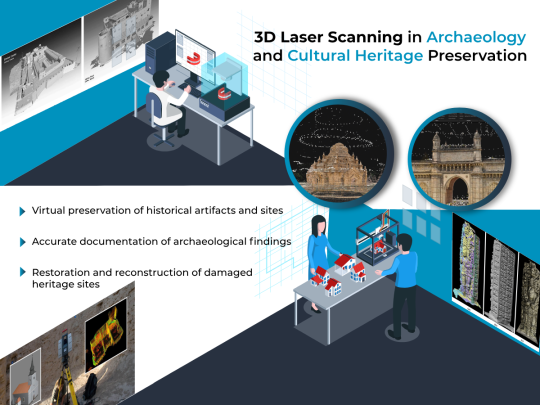
From Crumbling Castles to Digital Cathedrals: How 3D Scanning Protects History's Gems?
Have you ever walked through a historic building and wondered how it weathered centuries of storms and wear-and-tear? Preservationists face a constant battle against time, decay, and even well-meaning renovations that can erase vital details. But now, thanks to 3D Laser Scanning Services, these magnificent structures are finally getting the high-tech TLC they deserve.
What Is 3D Laser Scanning Technology?
So, how exactly does this magic wand of technology work? Well, think of lidar scanning like a super-powered camera that shoots millions of laser beams, mapping every nook and cranny of a building with millimeter precision. It's like taking a digital fingerprint of history, capturing every intricate detail from weathered stonework to ornate moldings.
How is laser scanning used for historic preservation?
But scanning is just the first step. These raw point clouds then get transformed into 3D BIM models, breathing life back into ancient structures. Think of it as building a virtual twin of the real thing, complete with dimensions, materials, and even hidden structural elements. This isn't just a pretty picture; it's a powerful tool for heritage & preservation.
Laser Scanning and Reverse Engineering:
With 3D Laser Scanning Services and Reverse Engineering Services, architects and engineers can analyze ancient structures like never before. They can identify cracks, assess potential damage, and even plan meticulous restorations, ensuring every brick and beam is preserved with historical accuracy. Think about uncovering hidden passageways or reconstructing lost sections with near-perfect fidelity!
Laser Scanning and Architectural Rendering:
Beyond restoration, 3D Laser Scanning Services and Architectural Rendering offer a whole new realm of possibilities. Think about creating stunning virtual tours that transport visitors back in time, or even using the scans to produce museum-quality replicas for exhibitions around the world. It's like bringing history to life, pixel by pixel.
This incredible technology isn't just about fancy gadgets; it's about preserving the stories etched in our built environment. Every weathered wall and crumbling arch whispers tales of the past, and The Vital Role of Laser Scanning in Heritage Conservation ensures those voices aren't silenced. It's a legacy project, safeguarding the tangible remnants of our shared history for generations to come.
Time Becomes a Treasure: How BIM Safeguards History with a Digital Touch?
Think of venturing into a crumbling castle, not to witness decay, but to witness its potential for resurrection. Here comes BIM (Building Information Modeling) in Heritage & Preservation. With 3D Laser Scanning Services, meticulously detailed point clouds become the building blocks of history's revival.
Think of lidar 3d scanning as a time capsule, capturing every crack, curve, and inscription like a digital archaeologist. These intricate scans, transformed into 3D BIM models, become virtual twins of the real thing, preserving every architectural whisper from weathered stonework to hidden frescoes. This isn't just a pretty picture; it's a powerful tool for Historic Preservation 3D Laser Scanning and Modeling.
With pinpoint accuracy, engineers and architects can assess structural integrity, identify potential dangers, and plan meticulous restorations. Building Information Modeling uncovers hidden passageways through scan analysis or reconstructing lost sections with laser-guided precision. Every brick and beam is treated with historical reverence, ensuring authenticity in every restoration step.
However, the Vital Role of Laser Scanning in Heritage Conservation extends beyond repairs. 3D Laser Scanning Services and Architectural Rendering bring history to life through immersive virtual tours and museum-quality replicas. Walk through ancient temples in VR, explore forgotten chambers, or marvel at detailed models in exhibitions across the globe. It's a democratization of history, making its grandeur accessible to all.
BIM in heritage isn't just about technology; it's about respect and responsibility. It's about understanding the stories etched in every archway and preserving them for future generations. With digital guardians like 3D Laser Scanning Services and Point Clouds, the whispers of the past echo louder than ever.
So, the next time you wander through a timeworn masterpiece, remember the quiet heroes working behind the scenes. BIM 3D Scanning Services are giving history a second chance, ensuring these architectural marvels not only survive, but thrive in the digital age. And who knows, maybe one day, thanks to this technology, we'll finally crack the code of those ancient mysteries hidden within their walls. To know more on scan to BIM or 3D laser scanning, talk to the proficient BIM consultants in USA.
#3D Laser Scanning Services#3D Laser Scanning Technology#BIM 3D Scanning Services#Lider 3D Scanning#Historic Preservation 3D Laser Scanning and Modeling#construction#architecture#maryland#florida#New York#business#usa#3D Laser Scanning Tejjy Price#Tejjy Inc
1 note
·
View note
Text
Leveraging BIM Services for Efficient and Sustainable Water Projects
Building Information Modeling (BIM) is transforming how water and wastewater facilities are designed, built, and operated. This advanced approach integrates digital 3D modeling technology with a centralized, coordinated database of project and asset information. BIM for water and wastewater infrastructure that enables teams to optimize the entire lifecycle.
What is BIM and How Does it Work?
BIM creates a virtual representation of a facility in intricate 3D detail well before construction begins. This model integrates rich data on everything from materials and equipment to maintenance schedules. Engineers, architects, and contractors use collaborative BIM software to coordinate their work and make informed decisions.
Some key abilities of BIM include:
Visualization, Photo-realistic renderings enable stakeholders to visualize completed facilities.
Clash detection, BIM spots conflicts between building systems before installation.
Simulation, Models are used to simulate workflow, energy usage, acoustics, etc.
Quantity takeoff, Automated measurement of materials lowers estimation errors.
Project management, 4D scheduling tools plan construction sequences.
With a unified BIM model, all collaborators access updated design and asset data in real time.

BIM Services for the Water Sector
Specialized BIM services cater their solutions directly to the water industry. This includes developing custom datasets, content, workflows, and applications.
Common BIM services offered are:
BIM Modeling
3D modeling of treatment plants, reservoirs, pump stations, etc.
Incorporating manufacturer content for equipment like membranes, chlorinators, and clarifiers.
Modeling underground assets and topographic data.
Clash Detection
Checking for clashes between structural, MEP, and process components.
Ensuring maintainability of equipment layouts.
Construction Planning
4D construction scheduling, logistics planning, and worksite analysis.
Planning safe equipment installation and rigging.
Quantity Takeoff and Estimation
Extracting accurate material quantities directly from the model.
Generating detailed cost estimates and bills of quantity.
Facility Management
Creating as-built models linked to asset data like O&M manuals, warranties, repair history, etc.
Scheduling preventive maintenance and tracking asset conditions.
Real-World Benefits of BIM for Water Projects
Implementing BIM provides tangible improvements throughout the project lifecycle:
Planning and Design
Better early-stage concepts through virtual prototyping of facilities.
Faster regulatory approvals using realistic visualizations.
Optimal sizing and selection of treatment equipment.
Construction
Reduced rework through early clash detection.
Just-in-time material delivery aligned to the construction schedule.
Safer project execution via detailed work plans.
Commissioning and Handover
Accurately documenting as-built conditions for operations.
Streamlined training of facility staff using model walkthroughs.
Operations
Improved maintenance planning and asset management.
Monitoring asset conditions and performance data in a digital twin.
Simulating changes like capacity upgrades or process modifications.
BIM allows water teams to reduce capital costs, speed up project delivery, improve sustainability, and minimize risks.

Partnering with BIM Experts
Given its specialized nature, water and wastewater owners should partner with expert BIM consulting firms. Look for a provider with extensive experience in the water sector and expertise across the entire BIM workflow. This ensures you reap the full advantages BIM has to offer.
To learn more about implementing BIM services for your next water infrastructure project, contact us today.
0 notes
Text
BIM Modeling Services in USA - BIMPRO LLC

BIMPRO LLC is a BIM Company in Texas offering Revit Drafting, BIM Architectural, Structural, MEP, Clash Detection, coordination, CAD to BIM and Revit Family Creation Services in USA.
#BIMCompanyinTexas#BIMCompanyinUSA#2DDraftingServicesCalifornia#3DModelingServicesColorado#BIMServicesDallas
2 notes
·
View notes
Text
BIMPRO LLC is a BIM Company in Texas offering Revit BIM Modeling services to architectural, engineering, construction firms in USA. Our BIM expert team is dedicated to enhancing project efficiency, collaboration, and accuracy through advanced BIM technologies, ensuring that each project is delivered on time and within budget.
2 notes
·
View notes
Text
Best Architectural 3D Revit Modeling Services at Affordable Price
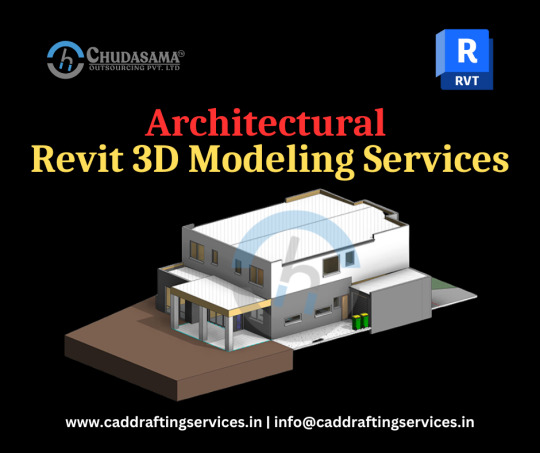
Chudasama Outsourcing is a leading Architectural BIM company that provides high standards of services and quality. We provide high-quality 3D Revit Modeling Services at an affordable price. We take great pride in being able to produce excellent quality Revit modeling services to our clients overseas. Our clients are located in the USA, UK, Canada, New Zealand, Australia, and UAE, etc. We provide services like Architectural, Structural, MEPF, Shop Drawings, and as-built Drawings in Revit. If you want to outsource any such services, then contact us at [email protected]
#revit modeling services#3d revit modeling services#architectural revit modeling#architectural revit modeling services#3d architectural revit modeling#outsource revit modeling services#bim modeling services#architectural#revit#building information modeling
3 notes
·
View notes
Text
Renovation and retrofit projects are becoming more efficient and accurate due to the growing use of Architectural Scan to BIM Services in USA. By converting laser-scanned data into intelligent 3D BIM modeling services, this approach enhances planning, reduces costly errors, and streamlines execution. It’s transforming how architects and engineers modernize existing structures, making projects faster, smarter, and more sustainable.
#architectural scan to bim#architectural scan to bim services in USA#architectural scan to bim services
0 notes
Text
Hey AEC enthusiasts! Ever wondered what goes into bringing a new Chipotle to life?
United-BIM recently wrapped up a project in Connecticut, providing top-notch Revit modeling and clash coordination services. Our team ensured every detail was meticulously planned, from architectural elements to MEP systems, using tools like Revit and Navisworks. It's projects like these that highlight the importance of precise BIM services in today's construction landscape.
Want to know more about the leading BIM modeling experts in the USA? Visit our website to explore our work.
0 notes
Text
Why Electrical BIM Modeling is Reshaping Construction Projects Across Illinois
Over the past decade, Building Information Modeling (BIM) has completely changed how construction projects are designed and managed in the United States. But while BIM is often associated with architecture and structural engineering, one of the most impactful and often overlooked applications lies in the electrical discipline.
In Illinois, a state known for its architectural landmarks and diverse construction environment, Electrical BIM modeling is helping design teams, contractors, and facility managers execute smarter, faster, and more cost-efficient projects.
What Is Electrical BIM Modeling?
Electrical BIM modeling is the process of creating a detailed 3D digital representation of all electrical components within a building, think lighting systems, conduits, panels, cable trays, and outlets. But this isn’t just about pretty models. It’s about embedding real, functional data into every component, such as load calculations, circuiting logic, and code compliance.
Using BIM software platforms like Autodesk Revit, electrical engineers and designers can simulate how systems will behave in real life, coordinate with other trades, and detect potential issues long before construction starts.
Why It’s Especially Important in Illinois
Illinois is home to both dense urban development in Chicago and wide-ranging infrastructure across suburban and rural areas. Projects here face a broad range of design challenges: older buildings with outdated electrical systems, varying local codes, and aggressive construction schedules.
Here’s where Electrical BIM modeling makes a difference:
Code Compliance & Permitting In Illinois, each city can enforce its own version of the electrical code, based on the National Electrical Code (NEC). By integrating these requirements into a BIM model, design teams can automatically check compliance and reduce back-and-forth with permitting authorities.
Clash Detection with Other Trades Electrical BIM makes it easy to detect collisions, say, a conduit running into a mechanical duct or steel beam before crews ever hit the job site. In the tight, layered infrastructure of downtown Chicago buildings, this is a game-changer.
Accurate Prefabrication For contractors working on tight schedules (which is common in Illinois winters), prefabrication is key. With a well-coordinated BIM model, electrical components can be prefabricated offsite with high accuracy, minimizing labor and waste on site.
Easier Renovations and Retrofits Many Illinois buildings, especially in places like Springfield and Joliet, are more than 50 years old. Electrical BIM modeling helps teams map out existing conditions and plan upgrades efficiently, even when original documentation is missing or outdated.
Even local school districts and public housing authorities are beginning to require BIM coordination for new projects, helping them manage their buildings more effectively long-term.
Collaborate now with Clove Technologies for precise and efficient results.
Check out this blog — Why Mechanical BIM modeling in Illinois is Essential for Modern AEC Projects
Keywords : Plumbing BIM modeling, Mechanical BIM modeling in Texas, Fire Protection BIM modeling in Texas, Fire Protection BIM modeling in Texas, Low Voltage BIM modeling in Florida, Plumbing BIM modeling in Georgia, Mechanical BIM modeling in Illinois, Fire Protection BIM modeling in Illinois, Electrical BIM modeling California, Low Voltage BIM modeling, CaliforniaBIM modeling in Georgia, Scan to BIM, Scan to BIM in Georgia, H.V.A.C 3D Modeling in US / USA, Plumbing 3D Modeling, H.V.A.C 3D Modeling.
0 notes
Text
The Role of BIM Outsourcing in Sustainable Building Design

In an era where environmental consciousness and sustainability are paramount, the construction and architecture industries are increasingly turning to Building Information Modeling (BIM) to streamline projects and enhance sustainability. BIM, a digital representation of a building's physical and functional characteristics, has revolutionized how structures are designed, built, and managed. As the demand for sustainable building design grows, the role of BIM outsourcing has become more critical than ever. This blog post explores how BIM outsourcing contributes to sustainable building design and why it is an indispensable tool for the modern construction industry.
The Intersection of BIM and Sustainability
BIM facilitates the creation of accurate and detailed digital models that provide a holistic view of a building's life cycle, from design and construction to operation and maintenance. This comprehensive perspective enables architects, engineers, and construction professionals to make informed decisions that enhance sustainability. Key sustainability benefits of BIM include:
Energy Efficiency: BIM allows for precise energy modeling and simulation, enabling the design of energy-efficient buildings. It helps identify potential areas for energy savings, optimize HVAC systems, and select sustainable materials.
Material Optimization: By providing accurate quantity take-offs and detailed material specifications, BIM minimizes waste and ensures the efficient use of resources. This is crucial in reducing the carbon footprint of construction projects.
Improved Collaboration: BIM's collaborative platform fosters communication and coordination among project stakeholders, reducing errors and rework. This efficiency not only saves time and costs but also minimizes the environmental impact associated with construction activities.
The Advantages of BIM Outsourcing
BIM outsourcing involves delegating BIM-related tasks to specialized firms or professionals who possess the expertise and technology required to execute complex BIM processes. This approach offers several advantages, particularly in the context of sustainable building design:
Access to Specialized Expertise: Outsourcing firms often have a team of skilled BIM professionals who are well-versed in the latest technologies and sustainable design practices. They bring specialized knowledge and experience, ensuring high-quality BIM deliverables that align with sustainability goals.
Cost-Effectiveness: Developing an in-house BIM team can be expensive, requiring investment in software, training, and personnel. Outsourcing provides a cost-effective solution, allowing companies to access top-notch BIM services without the overhead costs.
Scalability and Flexibility: BIM outsourcing offers the flexibility to scale services according to project requirements. Whether a project demands extensive BIM modeling or specific sustainable design analysis, outsourcing firms can tailor their services to meet the needs of the project.
Focus on Core Competencies: By outsourcing BIM tasks, architecture and construction firms can focus on their core competencies, such as design innovation and project management. This focus enhances overall project quality and sustainability outcomes.
How BIM Outsourcing Enhances Sustainable Building Design
BIM outsourcing plays a crucial role in achieving sustainable building design by providing the expertise and technology necessary to implement sustainable practices effectively. Here are some specific ways in which BIM outsourcing contributes to sustainability:
1. Energy Performance Analysis
One of the primary goals of sustainable building design is to reduce energy consumption. BIM outsourcing firms utilize advanced energy modeling software to simulate a building's energy performance. These simulations consider various factors, such as building orientation, insulation, glazing, and HVAC systems, to optimize energy efficiency. By outsourcing this task, project teams gain access to cutting-edge tools and methodologies that may not be available in-house.
2. Lifecycle Assessment
BIM outsourcing enables comprehensive lifecycle assessments (LCA) of building materials and systems. LCA evaluates the environmental impact of materials throughout their lifecycle, from extraction and production to disposal. By analyzing these impacts, BIM professionals can recommend sustainable alternatives and strategies to minimize environmental footprints. This assessment is crucial for making informed decisions about material selection and construction methods.
3. Green Building Certification
Achieving green building certifications, such as LEED (Leadership in Energy and Environmental Design) or BREEAM (Building Research Establishment Environmental Assessment Method), is a significant milestone in sustainable building design. BIM outsourcing firms often specialize in preparing the documentation and analysis required for these certifications. They ensure that all aspects of the design meet the stringent criteria set by certification bodies, enhancing the building's sustainability credentials.
4. Waste Reduction and Recycling
BIM's ability to provide accurate material quantities and specifications aids in reducing construction waste. BIM outsourcing firms excel in creating precise models that minimize over-ordering and waste. Additionally, they can integrate sustainable practices, such as recycling and reusing materials, into the construction process. This not only reduces waste but also lowers project costs and environmental impact.
5. Sustainable Urban Planning
Beyond individual buildings, BIM outsourcing can contribute to sustainable urban planning. By creating detailed models of entire neighborhoods or districts, BIM professionals can analyze the environmental impact of large-scale developments. This analysis includes factors such as transportation networks, green spaces, and water management systems. The insights gained from these models guide the design of sustainable urban environments that promote energy efficiency and reduce carbon emissions.
Challenges and Considerations in BIM Outsourcing
While BIM outsourcing offers numerous benefits, it is essential to consider potential challenges and ensure effective collaboration between in-house teams and outsourcing partners. Key considerations include:
Communication and Coordination: Effective communication is critical to ensure that the outsourcing firm understands the project's sustainability goals and requirements. Regular updates and collaboration are necessary to align all stakeholders.
Data Security: As with any outsourcing arrangement, data security is a concern. It is vital to establish robust data protection protocols and ensure that sensitive project information is handled securely.
Quality Control: Maintaining quality standards is crucial in BIM outsourcing. It is essential to select a reputable outsourcing firm with a proven track record of delivering high-quality BIM services.
Conclusion
BIM outsourcing is a valuable strategy for achieving sustainable building design. It offers access to specialized expertise, cost-effective solutions, and advanced technologies that enhance the sustainability of construction projects. By leveraging the capabilities of BIM outsourcing firms, architects and construction professionals can optimize energy performance, reduce waste, and achieve green building certifications. As the construction industry continues to prioritize sustainability, the role of BIM outsourcing in delivering environmentally responsible designs will only grow in importance. By embracing this approach, companies can contribute to a greener, more sustainable future.
#BIM Outsourcing#Sustainable Building Design#Sustainable#Building Design#Building Information Modeling (BIM)#Green Building Certification#Waste Reduction#Urban Planning#bim modeling services#bim outsourcing services#outsource bim services#revit modeling services#3d bim modeling services#bim modeling service#bim modelling services#building information modeling services#outsourcing bim#revit bim modeling services#revit outsourcing services#bim outsourcing companies in usa#outsource bim services india#bim modeling outsourcing#bim outsourcing company#bim drafting outsourcing#architectural bim modeling services outsourcing#bim design outsourcing
0 notes
Text
How to Become a BIM Manager: Skills, Education, and Certification
With the construction industry becoming increasingly digital and data-driven, the demand for skilled Building Information Modeling (BIM) Managers is soaring. If you are passionate about technology and the built environment, a career as a BIM Manager offers excellent prospects. This article explores the steps to become a BIM Manager, the essential skills and certifications, and how Technostruct Academy can help you get there.
Educational Background
To start your journey toward becoming a BIM Manager, a degree in Architecture, Civil Engineering, Construction Management, or a related field is typically required. This foundational knowledge helps in understanding the intricacies of construction and design.
Postgraduate diplomas or certifications in BIM further strengthen your qualifications. While academic credentials are crucial, industry-specific training is what sets you apart.
Essential Skills for BIM Managers
BIM Managers require a unique blend of technical, managerial, and interpersonal skills:
Proficiency in BIM Software: Tools like Autodesk Revit, Navisworks, AutoCAD, and BIM 360 are essential. Knowledge of clash detection, model coordination, and data management is also critical.
Project Management: The ability to lead teams, manage timelines, and ensure quality is key.
Communication: A BIM Manager interacts with architects, engineers, and clients, requiring excellent communication and negotiation skills.
Problem Solving: Projects often encounter design conflicts or software challenges. A BIM Manager must troubleshoot and implement solutions efficiently.
Certifications That Boost Your Career
Several industry-recognized certifications can enhance your credibility:
Autodesk Certified Professional in Revit or Navisworks
BuildingSMART Professional Certification
RICS BIM Manager Certification
These certifications validate your expertise and improve your job prospects.
Career Path and Opportunities
Starting as a BIM modeler or coordinator provides hands-on experience and a stepping stone to management roles. As you gain expertise, you can advance to Senior BIM Manager, BIM Director, or even Chief Technology Officer in large firms.
Countries like the USA, UK, UAE, and Australia have a high demand for BIM Managers due to mandates for BIM implementation in public projects.
How Technostruct Academy Can Help
Technostruct Academy has emerged as a leading institute for BIM education. Their structured BIM Manager course is tailored for real-world application and includes:
Live Internship Opportunities: Collaborate on live projects with top US-based firms.
Advanced Software Training: Hands-on sessions with Revit, Navisworks, and other BIM tools.
Mentoring by Industry Experts: Learn from professionals who understand global BIM standards.
Placement Assistance: Technostruct Academy provides job readiness support and connects students with global job opportunities.
Their curriculum is designed not only to teach software but to develop project leadership, model coordination, and quality control skills essential for BIM Managers.
Final Thoughts
Becoming a BIM Manager is a journey of continuous learning and upskilling. The role is challenging yet rewarding, with immense growth potential. Whether you're a recent graduate or a working professional looking to transition into digital construction, Technostruct Academy offers the tools, training, and mentorship to help you succeed. By investing in quality education and practical experience, you can unlock a successful career as a BIM Manager.
0 notes
Text
Get reliable Architectural BIM Services in USA for accurate modeling, design and planning Improve construction efficiency with our expert BIM solutions.
Plinnth is a unique tech consultant that offers Next-generation 5D Building Information Modelling with lifecycle BIM centric optimizations by leveraging big data & project controls as a key driver for efficiency. Plinnth combines 5D BIM and augmented reality devices to transform construction, maintenance and operations. Plinnth synergizes Best Practices and next generation technologies by augmenting its deep, hands on experience with building hardware, software, and the relationships that matter in AR-Wearables-IIOT-BIM-Smart Tools
0 notes
Text
On September 28, Boao Forum for Asia (BFA) held the Second Conference of International Science, Technology and Innovation Forum (ISTIF). As a major forum of the conference this year, the session “Digital Building, Future City” was successfully held.
The session was divided into two parts: keynote speech and roundtable discussion, hosted by Yidong He, Director of Bridge Technology at Parsons, USA. Eleven guests from China and overseas were invited to discuss the development of smart cities and international cooperation in the digital era and to address the challenges of the new pneumonia epidemic and boost the global economy.

Yidong He

Cheng Su
In the keynote speech session, Cheng Su, assistant president of the South China University of Technology and deputy director of the State Key Laboratory of Subtropical Building Science, commented that with the implementation of the construction strategy of the Guangdong-Hong Kong-Macao Greater Bay Area, the comprehensive management and control of urban all-spatial resources in the Greater Bay Area under the disaster environment has become an increasingly urgent topic to be addressed.
Su took the seismic risk assessment of the North Campus of the South China University of Technology as an example to elaborate the urban seismic disaster risk assessment strategy based on the BIM-GIS platform it is developing. The platform enables the rapid establishment of urban building complex exposure models and urban building complex seismic vulnerability curves, thus obtaining more reasonable high-resolution city-level seismic loss maps. This is particularly beneficial to the seismic risk assessment in the Guangdong-Hong Kong-Macao Greater Bay Area.

Jian Yang
Jian Yang, Chairman and President of the Zhujiang Foreign Capital Architectural Design Institute Co., Ltd. Guangzhou, addressed his opinion based on the topic "Consistent Design Thinking and Practice of Industry-wide Mode and Figure". In his presentation, Yang elaborated on how to solve the problems of efficiency, effectiveness and efficiency of BIM forward design, so as to realize the full-establishment BIM forward design with full staff, full project, full profession, full process, full support and full chain. On the basis of this, the practice of model-real consistency will be continued, trying to form a complete technical route of "model-real consistency" to provide a reliable digital base for the intellectualization of engineering projects.
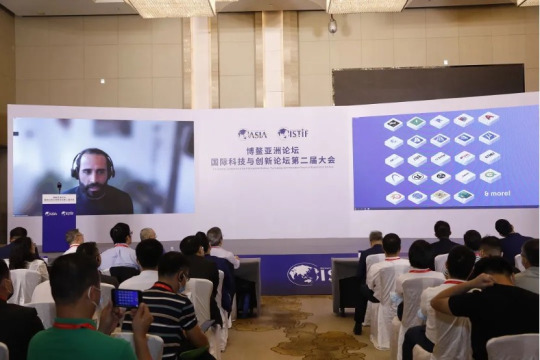
Matteo Cominetti
Matteo Cominetti, CEO of Speckle, an international open-source platform, mentioned that the construction industry itself has achieved more innovation than ever as a result of open-source software, which is not a zero-sum game for companies, but a business model. For Speckle, at its core is a composable object model similar to a database, which allows users to combine, store and access different data for free through the platform, allowing all parties in a design and build project to share large professional files in the 3D format and automate their work in real-time.
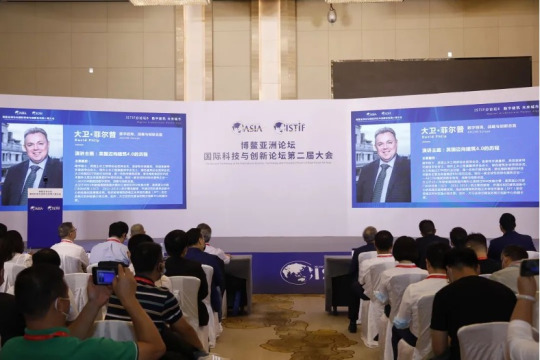
David Philp
David Philp, Director of Digital Consulting, Strategy and Innovation at AECOM Europe, discussed in detail the UK's journey towards Construction 4.0. As he mentioned, the increasing number of digital twins and innovative modeling systems are empowering the community and profession to work efficiently. BIM as a highly specific tool to produce higher and better results, measurements, insights and investment decisions with fewer inputs, especially for new capital projects, enables more long-term insights, better measurement methods and feedback, and higher value.
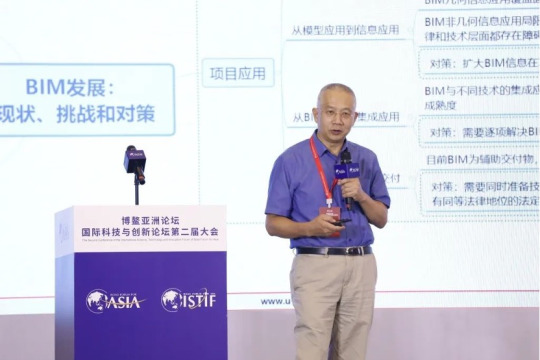
Guanpei He
Guanpei He, BIM expert and Chairman of Ubiquitous Technology Limited Guangzhou, analyzed in detail the relationship between BIM and digital construction, intelligent construction and smart construction. He also discussed the BIM application environment faced by Chinese enterprises, the promotion mode of BIM in China, and the current situation, challenges and countermeasures of BIM development. He especially pointed out that in order to expand the application of BIM in construction scenes and integrated data, the primary issue is to solve the problem of integrated application of BIM and different technologies, so that BIM can become a technical condition for statutory delivery.
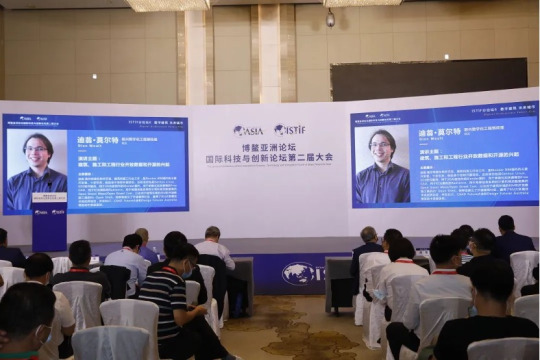
Dion Moult
Dion Moult, Emerging Digital Engineering Manager at Lendlease, talked about how open-source data is one of the only means of solving the problems with the current approach to creating digital buildings, and celebrating that with the explosion of new technologies, the industry will shift from a vendor-centric approach to a native open data approach which puts users back in control of the digital future.



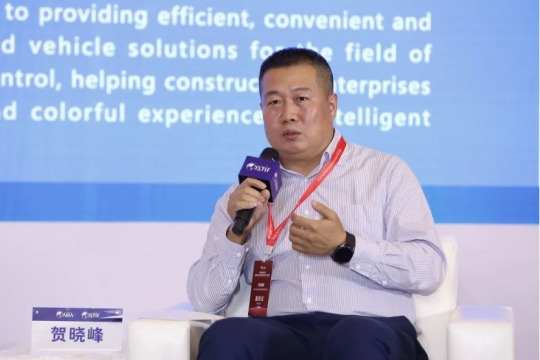

Several guests joined the following roundtable discussion, they were, Yi Jiang, Managing Director of Huaxin Group Co., Ltd, Jinrong Tan, Professor of the Department of Electrical and Computer Engineering, Faculty of Science and Technology at the University of Macau and IEEE International Science Ambassador, Yichuan Deng, Managing Director of Guangzhou Huajian Intelligent Technology Co., Ltd, Nan Hu, Professor of the School of Civil Engineering and Transportation of South China the University of Technology, and Xiaofeng He, Marketing Director of Shenzhen Daoer Intelligent Control Technology Co., Ltd. They discussed the prospect and future of digital building development with their own experiences around topics such as microwave displacement sensing for elevator IoT, three fundamental dynamics of digital empowerment enterprises in the construction industry, digital building under 3D printing technology, and intelligent import/export management of digital building.
0 notes
Text
BIM Architectural Services - BIMPRO LLC
Our Architectural BIM Services provide accurate Revit 3D model and 2D design drawings for architectural, designing firms across USA.

#ArchitecturalBIMServices#BIMArchitecturalServices#RevitArchitecturalServices#ArchitecturalRevitServices
1 note
·
View note